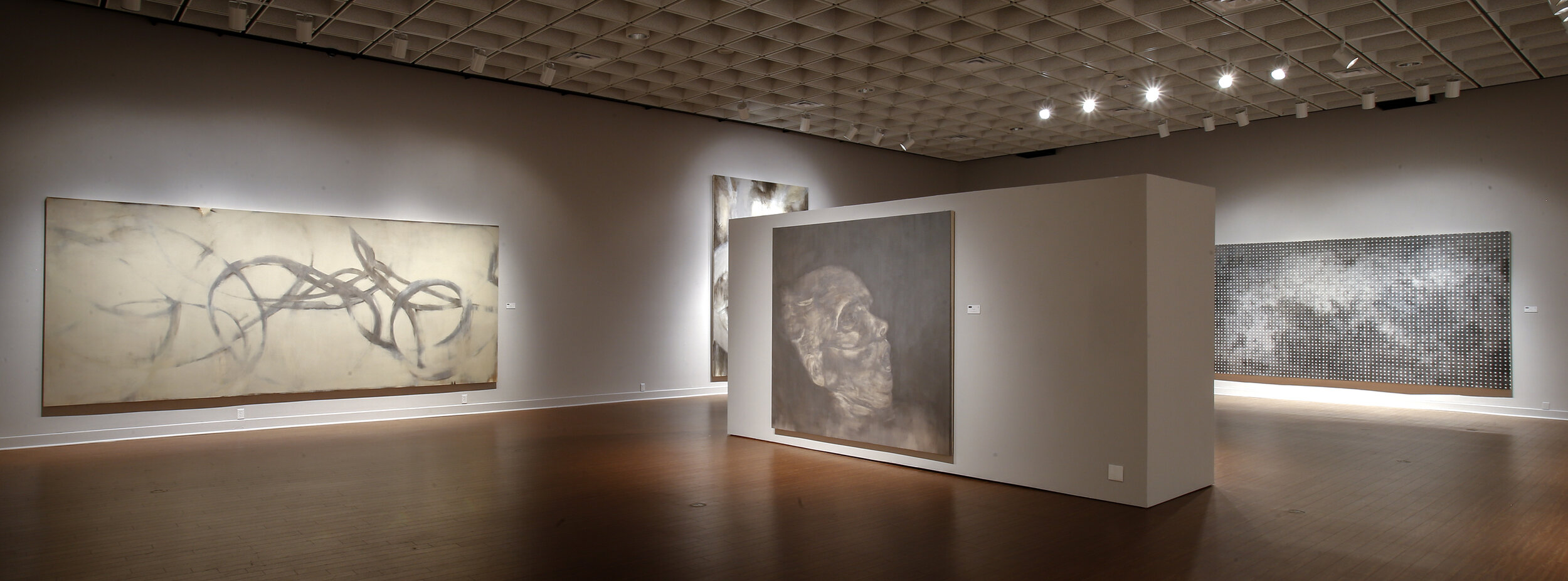
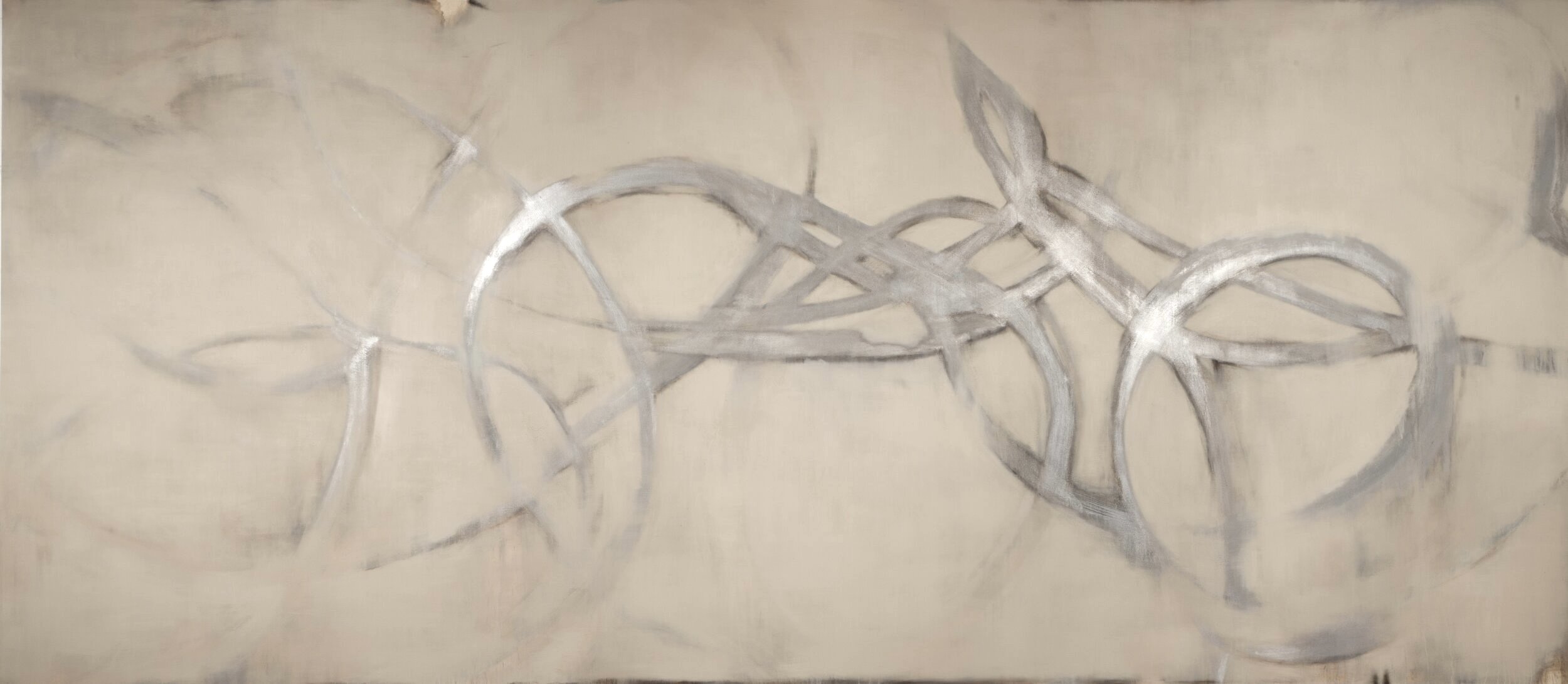

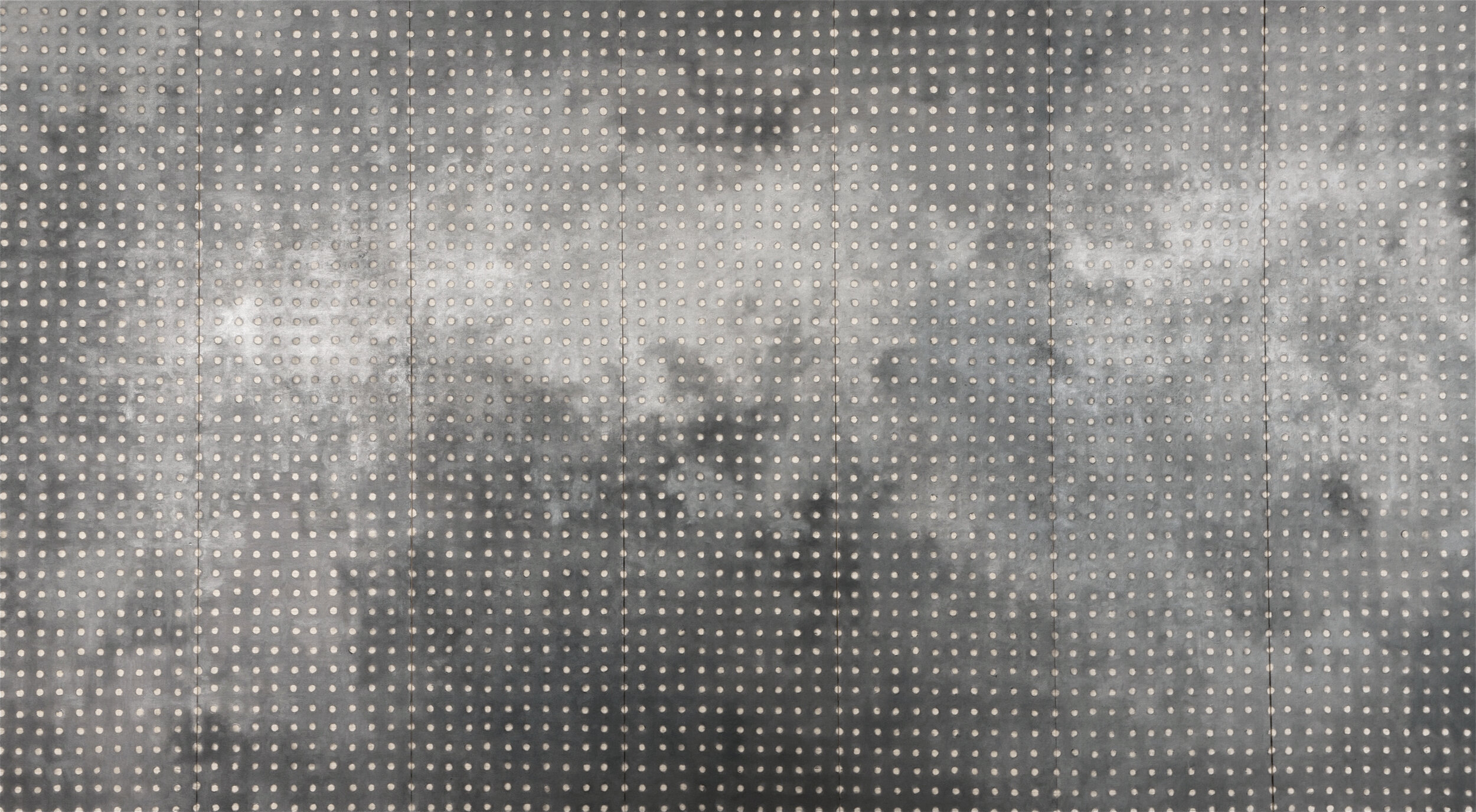


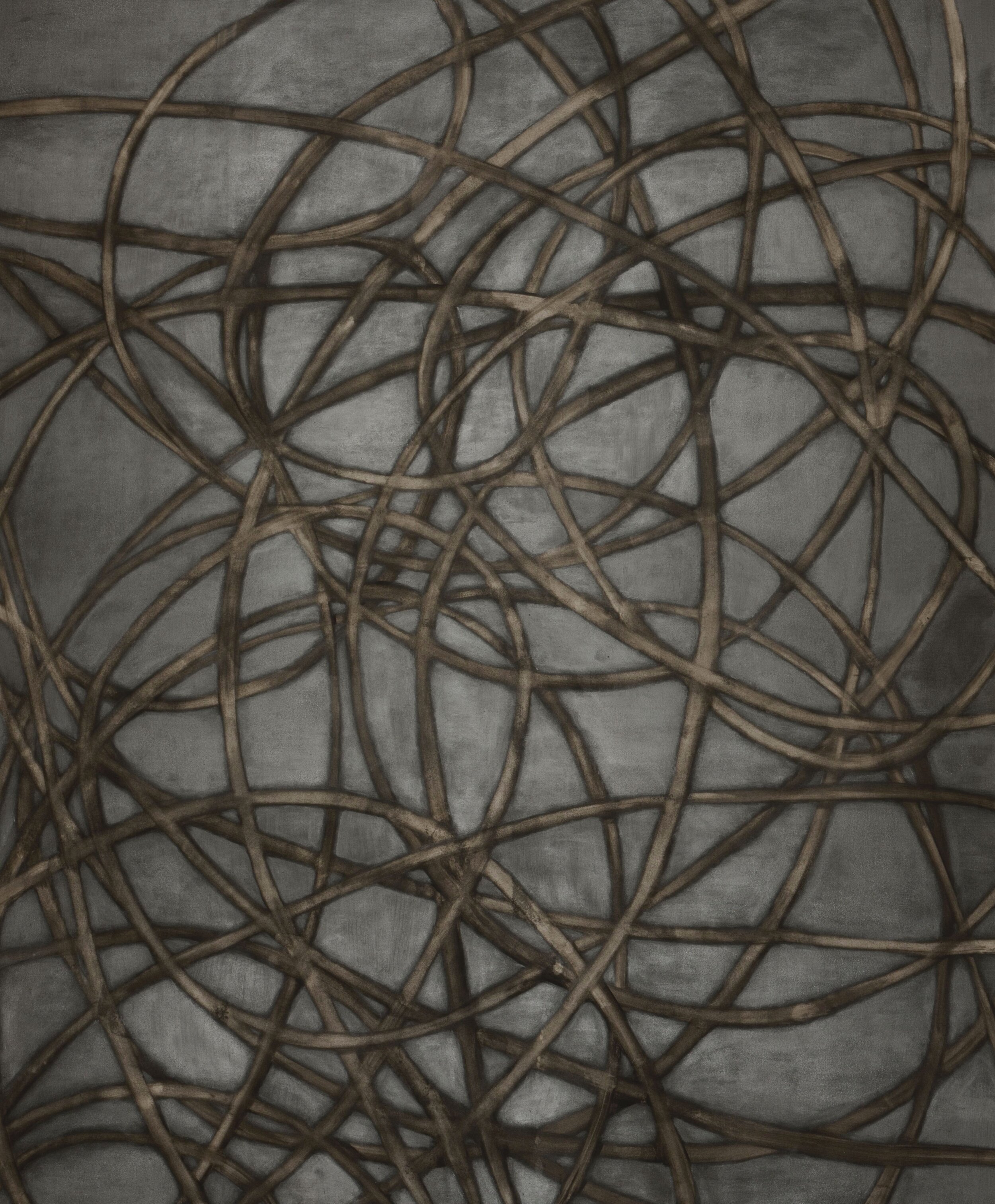

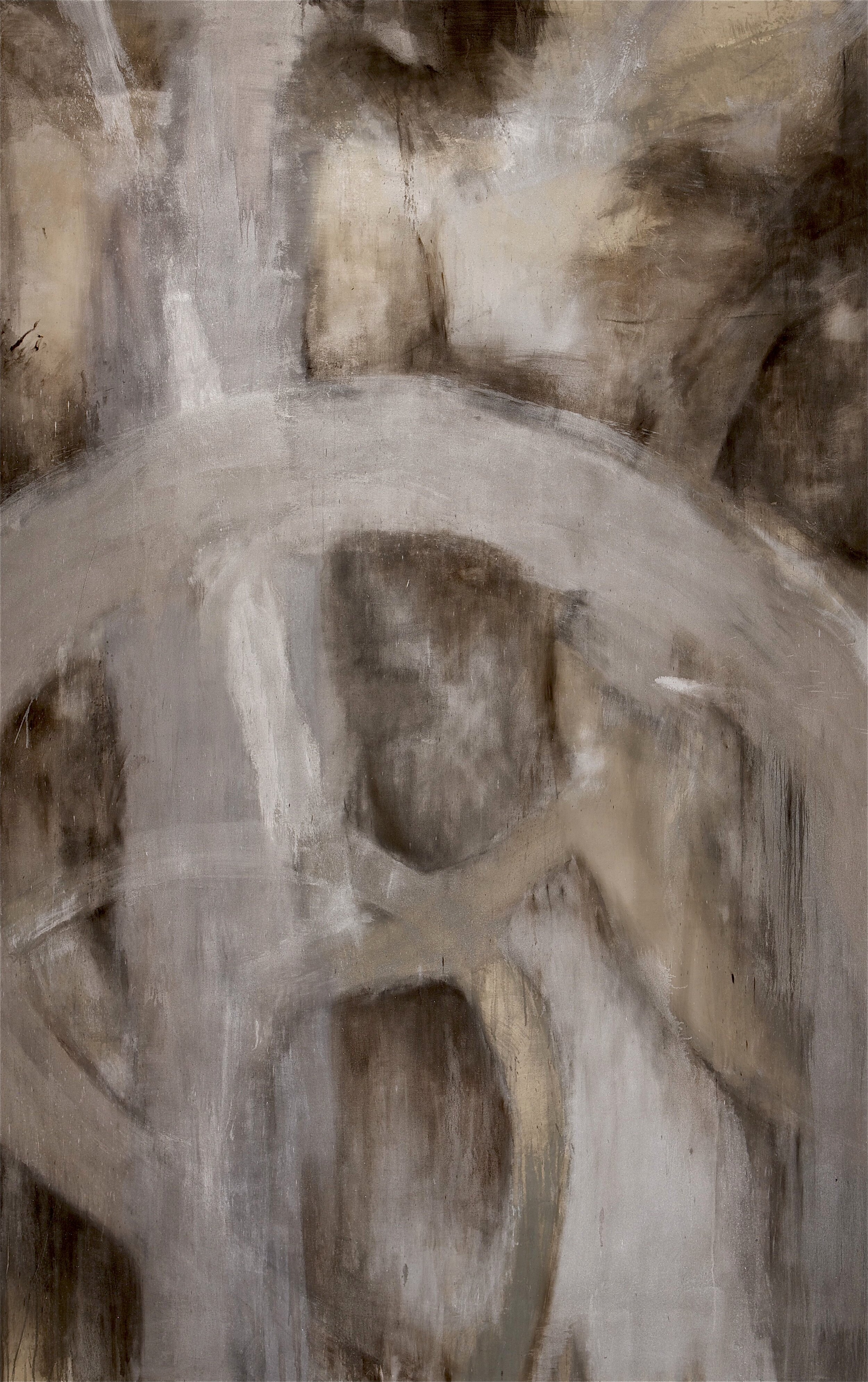
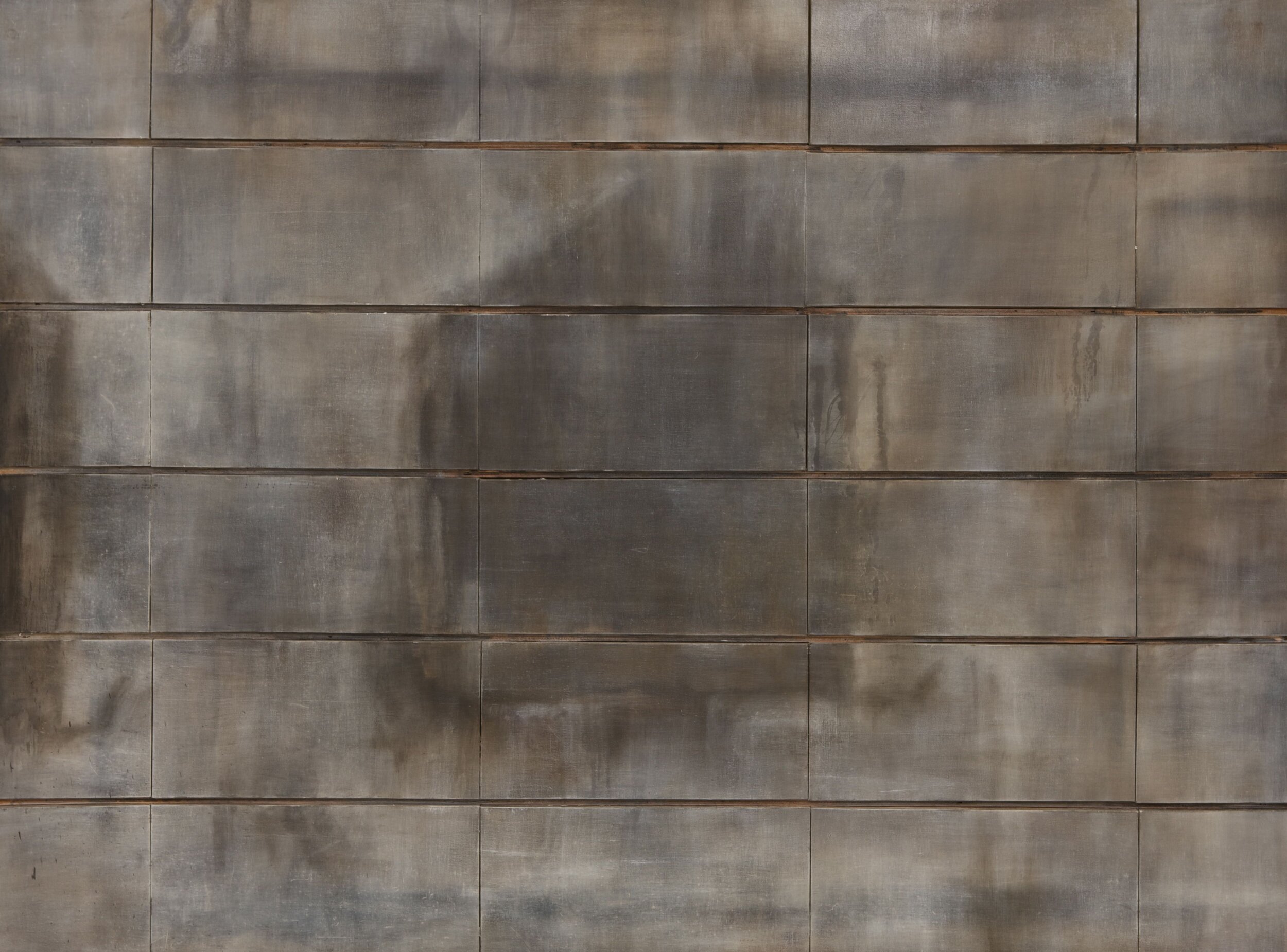


Threshold, 2013
Bob Rauschenberg Gallery , photos by Ed Chappell
ABOUT
The paintings in Threshold inspire habits of mind that function as an antidote to our noisy world. They generate a conversation where sound bites fail and logic falters. Instead of simplifying the complexity of our emotional responses, we are asked to hold in tension several powerful, often conflicting emotions when engaging with them.
This body of work escorts us to a place that resists the appeal of certainty and the glorification of speed; it moves us beyond the reach of ambiguity to reveal the quiet truth of the unknowable
.
The palette of Threshold is is dominated by the colors of raw canvas and silver. The push and pull between the organic feel of the canvas color, which mimics flesh tones in certain pieces, and the artificiality of the silver, creates a subtle dynamic both within and between the paintings. The small-scale painting, TH5, feels like looking beneath a layer of skin to see the veins that pulse with life – until you blink and suddenly it isn’t a skin that can be penetrated at all, but a barrier between you and an organic entity in the process of becoming.
This incongruent combination of colors works with the composition to move us beyond dualistic ways of understanding. The rush of silver sweeps us across the canvas while the softness of the background makes us want to sink down into it. Just as we feel ouselves getting lost in its depths, our gaze shifts or we tilt our heads and a flash of metallic light pulls us right back to the surface. The edges of the canvas suggest another world beyond the limits of what we are shown here. And there is a tear in the paint at the top that exposes the raw material. Like the seam at the left edge of TH7, this tear tempts us to slide our fingers into the opening and gently pull it aside like a curtain. To reveal what? That is for each of us to decide. But it is refreshing to feel curious, to be coaxed into a heightened state of wonder where anything seems possible.
This sense of moving back and forth from the depth to the surface with the rhythm of breathing is evoked in several pieces. In TH2, we are captured by the beauty of moonlit clouds, or possibly a nebula. But this romantic image is interrupted by a grid of small circles of negative space, evenly dispersed from top to bottom, side to side, throughout this thirteen-foot painting. The sky is achingly beautiful but the mathematical precision of these holes of raw canvas won’t allow us to give in to the seduction of its beauty. They move us in two directions simultaneously; they can be seen as portals to another dimension waiting for us behind the nebulous clouds or they can usher us back to this world by referencing the act of their creation. The scale of this image overwhelms our field of vision in an instant, but seeps into our consciousness slowly as the meaning drifts in and out of shape like the clouds morphing across the canvas.
Alone in Dana’s studio, I found myself surrounded by onyx canvases with swirling lines and the painting of her mother’s last breath. The power of the painting of her mother resides in the fact that you can’t be sure if she is disappearing into the void or rapidly reconstituting herself from it. Is this the finale exhale or the first inhale? That morning, her mother’s breath seemed to be passing across all of these canvases, animating their motion. It struck me that the ethereal silver forms in TH6 rhyme with the earthy erasures that loop and loosen across the surfaces of TH11 and TH12. There is a feeling of love woven deeply between these paintings; a sense of being tangled together; inextricably linked. But there is also a sensation of release – release from our bodies, whether permanently through death or temporarily through the loss of ego that is found in intimate human connection.
While these paintings suggest the notion of release, they are not about transcendence. Momentary glimpses of the timeless and universal shine through even as they make us acutely aware of the here and now. Our immediate visceral response to the paintings is tempered by the cerebral vocabulary of their palette and forms. In this age of snap judgments and compulsive expression, they encourage contemplation and restraint. To spend time with them is to inhabit a liminal space that resonates with the truth of impermanence and uncertainty; it is to find meaning and value in the experience of standing on the threshold.
-- Wendy Chase, Ph D. 2013